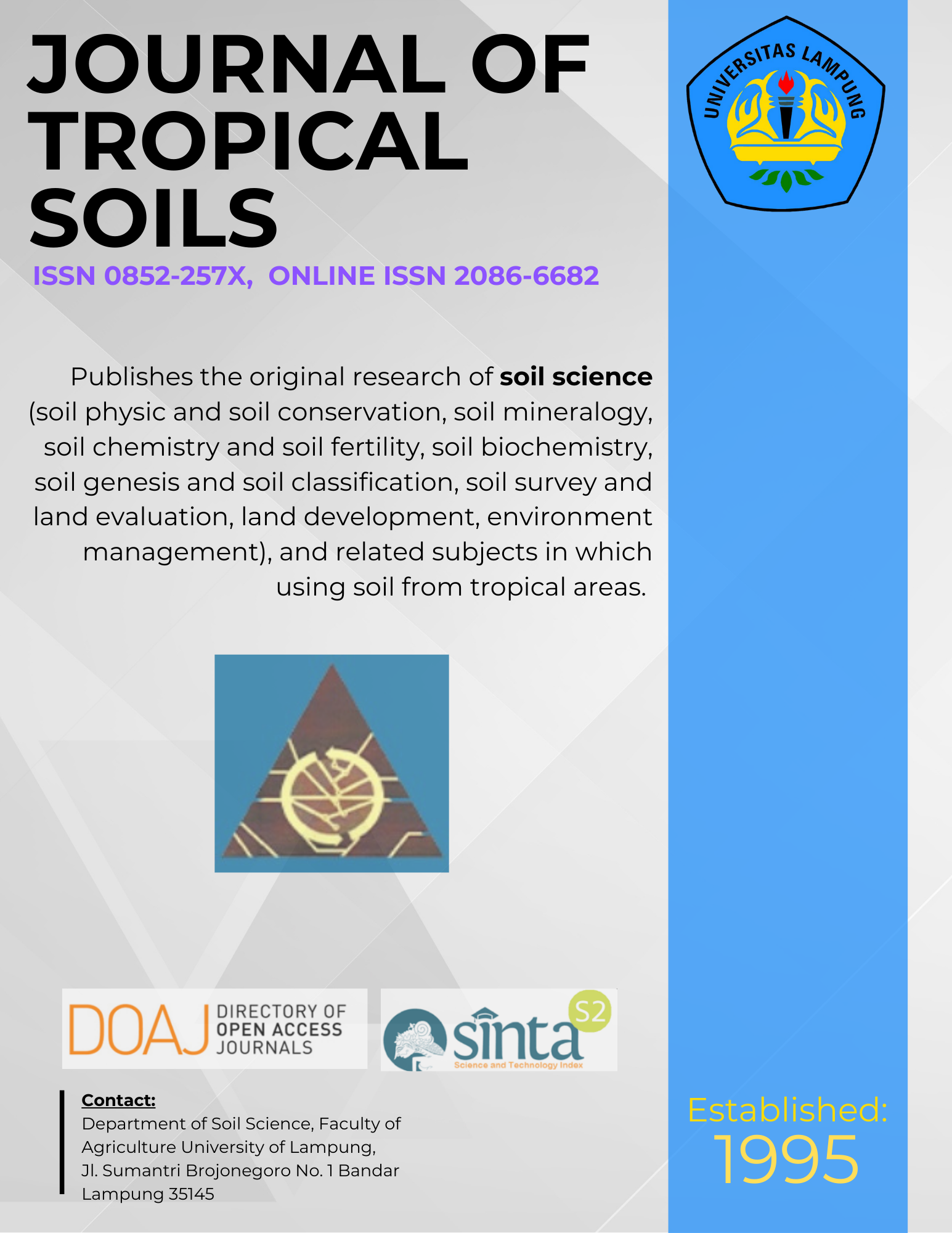Impact of Rainforest Conversion on Surface Runoff and Soil Erosion in Nopu Upper Catchment of Central Sulawesi
Main Article Content
Abstract
Rainforest conversion into agricultural lands in Nopu Upper Catchment such as cocoa plantations, maizes, cassava, peanuts, and scrub and bush were significantly increase soil erosions and surface runoffs, which in turn will decrease crops productivity and hydrologic functions of watershed. Soil erosion from maize and peanut rotation plots are higher 2.061,8% than soil erosions from natural forest plots. Soil erosions are higher also in intercroping young age cocoa, maize and cassava plots and maize plots respectively 2.023,8% and 2.012,3%.  Where as surface runoffs were increase up to 650,9% in medium age cocoa plots, 380,4% in intercroping young age cacao and cassava plots, and 347,1% in scrub and bush plots. The result of ANSWERS model simulation using daily C factors were indicate that rainforest conversion into agricultural lands in Nopu Upper Catchment causing soil and water loss respectively 3.190,5 ton/year and 115.441 m3/year.  Application of agroforestry systems in agricultural lands which in line with reforestation in stream line area of Nopu river and steepy agricultural lands (slope > 40%) are effectively reduce soil erosions up to 77,6% compare to soil erosion from existing land uses.
Downloads
Article Details
Section
License for Authors
Authors who publish with this journal agree to the following terms:
- Authors retain copyright and grant the journal right of first publication with the work simultaneously licensed under a Creative Commons Attribution License that allows others to share the work with an acknowledgement of the work's authorship and initial publication in this journal.
- Authors are able to enter into separate, additional contractual arrangements for the non-exclusive distribution of the journal's published version of the work (e.g., post it to an institutional repository or publish it in a book), with an acknowledgement of its initial publication in this journal.
- Authors are permitted and encouraged to post their work online (e.g., in institutional repositories or on their website) prior to and during the submission process, as it can lead to productive exchanges, as well as earlier and greater citation of published work (See The Effect of Open Access).
License for Regular Users
Other regular users who want to cite, distribute, remix, tweak, and build upon author’s works, even for commercial purposes, should acknowledge the work’s authorship and initial publication in this journal, licensed under a Creative Commons Attribution License.

